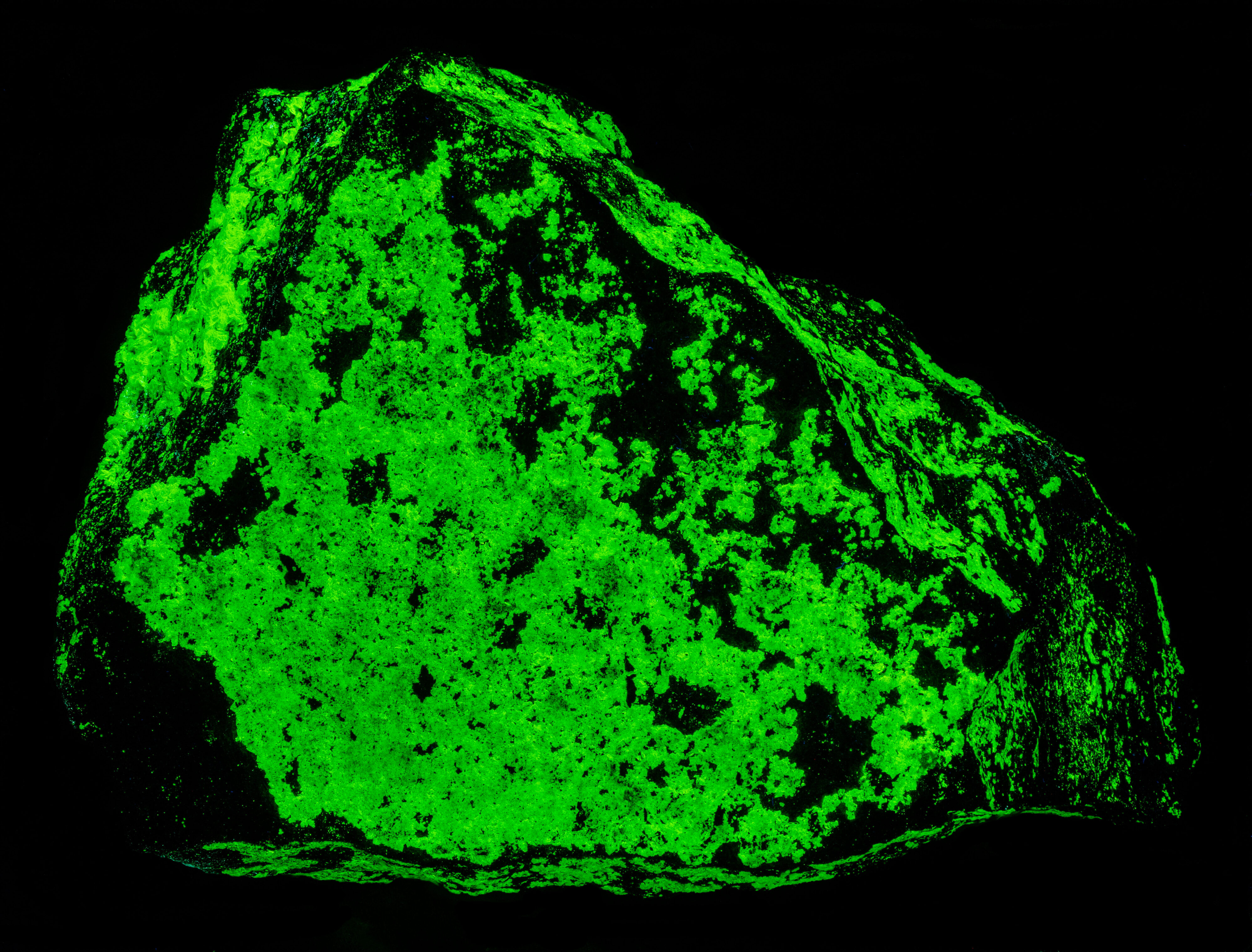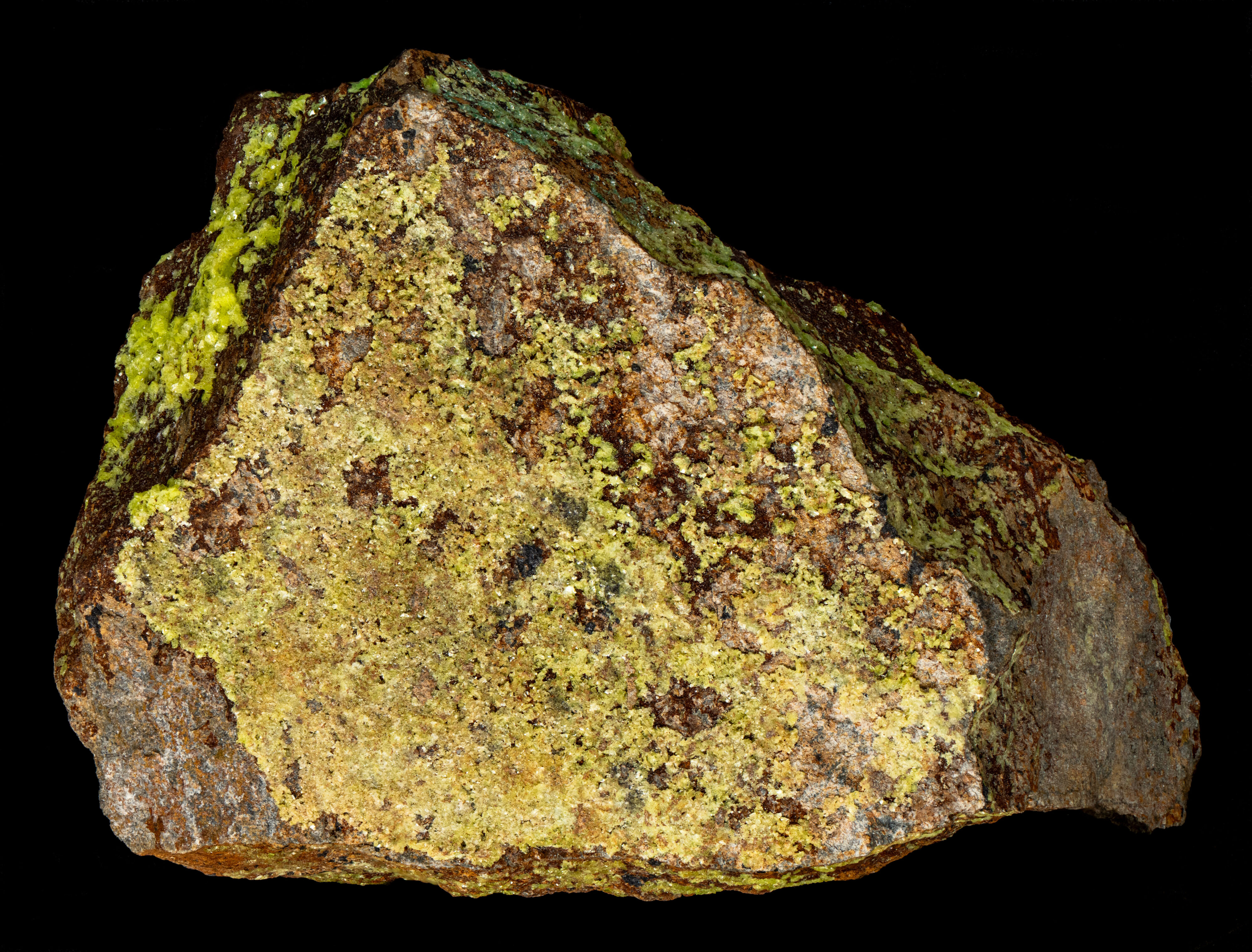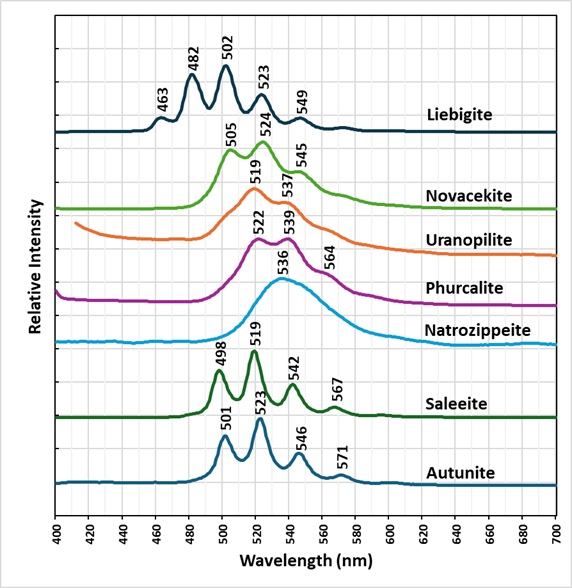Saleeite from Australia
Contributed by: Michael Crawford
Date: Jul 26th, 2025
Locality: Ranger No. 1 deposit, Ranger Mine, Kakadu, West Arnhem Region, Northern Territory, Australia (See on Mindat)
Size: 6 x 9 cm
Description:
A saleeite (Mg(UO2)2(PO4)2 · 10H2O) specimen from the Ranger Mine, Northern Territory, Australia. The uranyl ion that activates the fluorescence is part of saleeite’s crystalline structure. Therefore, the yellow green fluorescence of saleeite is intrinsic. The yellow green fluorescence is equally bright under all UV wavelengths.
The emission spectrum of saleeite has four sharp peaks (498 nm, 519 nm 542 nm, and 567 nm). These peaks occur due to the vibration of the linear uranyl ion when UV light strikes the specimen. The position of these vibronic peaks of saleeite differ from other uranium minerals because different elements in coordination with the uranyl ion modify the its vibration.
The radioactivity of this specimen is around 6400 CPM. It is high because the uranyl ion is part of the mineral structure and not a trace amount replacing some element in a mineral.
Summary of luminescence responses:
Saleeite (Mindat) (RRUFF)
- Fluorescence under Longwave (365nm LED) UV light: Green
- Fluorescence under Midwave (305nm LED) UV light: Green
- Fluorescence under Shortwave (255nm LED) UV light: Green



